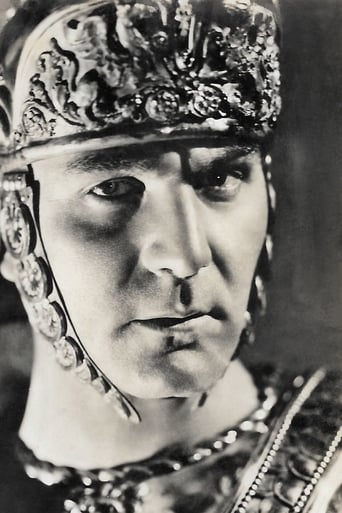

Mysterious Mr. Moto (1938)
The Japanese detective rounds up a league of assassins for Scotland Yard.
Watch Trailer
Cast


Similar titles
Reviews
Best movie of this year hands down!
Yawn. Poorly Filmed Snooze Fest.
Waste of time
Sorry, this movie sucks
Mr. Moto is undercover again. This time he helps Leon Ames escape from Devil's Island and then works for him as a servant so he can spy on the League of Assassins that Ames is part of. From what I've read here, this part of the movie has ruffled a few feathers as Lorre plays the Japanese servant in a very stereotypical manner. But it should be pointed out he's trying to appear slow-witted and harmless to throw off suspicion, so it's not like a Stepin Fetchit situation. There's actually a plot reasoning for it; he's not doing it to get racist laughs. Moto also puts on a disguise as a German artist at the art show late in the movie. This is amusing when you think about it: a German playing Japanese playing a German. Overall, it's not the best Moto picture. Lorre's performance helps things greatly but the story is pretty weak. Henry Wilcoxon plays an infuriating character who keeps refusing to believe there's any danger. There's a mystery about who is the leader of the League of Assassins that will come as no surprise to anyone. I'll give you a hint: it's an American actor using a dreadful British accent. It's a nice time-killer but nothing more.
This entry would more aptly be titled Mr Moto of London's Limehouse. Aside from the opening escape and the thrilling climax, most of the movie is set in an exuberantly realized Limehouse, peopled with a truly multitudinous collection of colorful Dickensian characters, who swiftly break into one of the most extraordinary mêlées ever captured in any movie, "A" or "B". The credit for the jaw-dropping handling of these vigorous action sequences belongs squarely to director Norman Foster, who has made the most of a somewhat faulty plot by moving it along with such action-full abandon, there is little time to reflect on the holes.Given half a chance, we might also notice that five of the twelve principal characters are both rather weakly written and portrayed: Mary Maguire, Henry Wilcoxon, Erik Rhodes, Leon Ames and Fred Vogeding do little to inspire audience applause. It's Peter Lorre, the ever-reliable John Rogers, the lovely Karen Sorrell, delightfully sinister Cecil Weston, enthusiastic Forrester Harvey, old-school-tie Lester Matthews, and would you believe a remarkably subdued Harold Huber, who do all the running.All Lorre's Moto excursions are well worth viewing. This one rates high on my list, though my personal favorite is Mr Moto's Last Warning.
This was my first look ever at Peter Lorre's "Mr. Moto" character, and I couldn't help but compare and contrast him to the famous "Charlie Chan" of a similar period. "Mr. Moto" is charming but isn't the comedian or the proverb-quoting Chan. I would have to watch a few more Moto movies before I could really compare the two fairly, as for quality and entertainment value, but what I saw in this film impressed me. My guess is that both of them are winners. I'm anxious to watch another Mr. Motor adventure, after seeing this.I think both characters did a lot - or at least I hope they did - to put Asians in a favorable light. Hey, Chan and Moto are the heroes in their movies, and the smart and courageous guys who solve the murders. These series had to be a boost to the Asian-American community.In this story, Moto pretends to be a fugitive from Devil's Island, one of two escapees who wind up in London. That was the idea all along for Our Man as he hoped his fellow man-of- flight, "Paul Brissac" would lead to him to bigger fish in the criminal world, specifically "The League of Assassins." Just when I thought this film was starting to get a tiny bit slow, it picked up nicely and had very good last 20-some minutes with a suspenseful ending. The actions were hokey but so what? The film is 70 years old so I don't expect state-of-the-art special-effects. In spots, it was so corny it made it fun. I was shocked how physical little Mr. Moto was, throwing bodies around like a WWF bruiser!Two quality actors, in addition to Lorre, had key roles in here: Leon Ames ("Brissac") and Henry Wilcoxon ("Darvak"). There's some good direction in here, too, by Norman Foster, who not only directed some Mr. Moto films, but a few Charlie Chan movies, too. He also married Claudette Colbert.In addition, the restoration job on the DVD transfer makes this a good-looking film.
It's interesting to me that it's the "B" films of the 30s and 40s that seem to be so popular today. I sincerely doubt that anyone involved in the making of these movies could have imagined or cared that there would be an audience for their work almost 70 years later. Mysterious Mr. Moto is an enjoyable "B" that features everything you could ask for in one of these movies a nice mystery, good action, sets that far exceed the film's limited budgets, exotic and quirky characters, and a sense of fun about the whole thing.Peter Lorre is back as the mysterious Japanese detective, Mr. Moto. In this installment in the series, Mr. Moto has himself imprisoned on Devil's Island so that he might gain the trust of one of the other prisoners who happens to be involved with a gang of international murderers for hire. They escape and head to America. Acting as the other man's servant, Mr. Moto is in a perfect position to put a stop to the group's activities.Mysterious Mr. Moto will never be confused with a deep, meaningful example of film-making. But it's not supposed to. It's a fun romp. And even if identity of the leader of the gang of murderers is obvious early on, it hardly matters. It's just fun watching Moto get to the answer. Lorre is as good as billed and he has a cast of familiar faces backing him up. Fans will recognize Harold Huber, Leon Ames, and Erik Rhodes from their numerous roles in other 30s "B" films. Each does a nice job of adding a bit of fun to the film.














